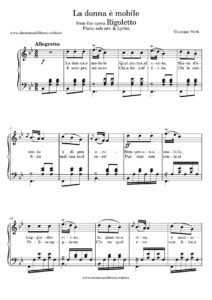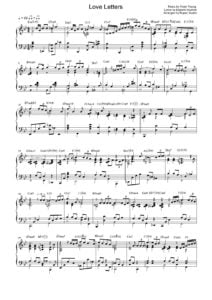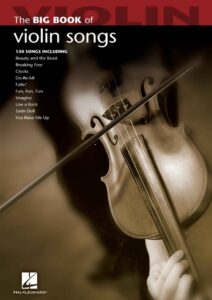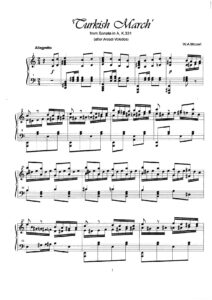Charlie Parker: the 100 most inspiring musicians of all time
American alto saxophonist, composer, and bandleader, Charlie Parker (b. Aug. 29, 1920, Kansas City, Kan., U.S.—d. March 12, 1955, New York, N.Y.) was the principal stimulus of the modern jazz idiom known as bebop, and—together with Louis Armstrong and Ornette Coleman—was one of the great revolutionary geniuses in jazz.

Charlie Parker grew up in Kansas City, Missouri, during the great years of Kansas City jazz, and began playing alto saxophone when he was 13. At 14, he quit school and began performing with youth bands, and at 16 he was married— the first of his four marriages. The most significant of his early stylistic influences were tenor saxophone innovator Lester Young and the advanced swing-era alto saxophonist Buster Smith, in whose band Parker played in 1937.
Parker recorded his first solos as a member of Jay McShann’s band, with whom he toured the eastern United States in 1940–42. It was at this time that his childhood nickname “Yardbird” was shortened to “Bird.” His growing friendship with trumpeter Dizzy Gillespie led Parker to develop his new music in avant-garde jam sessions in New York’s Harlem. Bebop grew out of these experiments by Parker, Gillespie, and their adventurous colleagues; the music featured chromatic harmonies and, influenced especially by Parker, small note values and seemingly impulsive rhythms. Parker and Gillespie played in Earl Hines’s swing oriented band and Billy Eckstine’s more modern band.
In 1944, they formed their own small ensemble, the first working bebop group. The next year Parker made a series of classic recordings with Red Norvo, with Gillespie’s quintet (“Salt Peanuts” and “Shaw Nuff ”), and for his own first solo recording session (“Billie’s Bounce,” “Now’s the Time,” and “Koko”). The new music he was espousing aroused controversy, but also attracted a devoted audience. By this time Parker had been addicted to drugs for several years. While working in Los Angeles with Gillespie’s group and others, Parker collapsed in the summer of 1946, suffering from heroin and alcohol addiction, and was confined to a state mental hospital.
Following his release after six months, Parker formed his own quintet, which included trumpeter Miles Davis and drummer Max Roach. He performed regularly in New York City and on tours to major U.S. cities and abroad, played in a Gillespie concert at Carnegie Hall (1947), recorded with Machito’s Afro-Cuban band (1949–50), and toured with the popular Jazz at the Philharmonic troupe (1949). A Broadway nightclub, Birdland, was named after him, and he performed there on opening night in late 1949; Birdland became the most famous of 1950s jazz clubs.
The recordings Parker made for the Savoy and Dial labels in 1945–48 (including the “Koko” session, “Relaxin’ at Camarillo,” “Night in Tunisia,” “Embraceable You,” “Donna Lee,” “Ornithology,” and “Parker’s Mood”) document his greatest period. He had become the model for a generation of young saxophonists. His alto tone was hard and ideally expressive, with a crying edge to his highest tones and little vibrato. One of his most influential innovations was the establishment of eighth notes as the basic units of his phrases. The phrases themselves he broke into irregular lengths and shapes and applied asymmetrical accenting.
Parker’s most popular records, recorded in 1949–50, featured popular song themes and brief improvisations accompanied by a string orchestra. These recordings came at the end of a period of years when his narcotics and alcohol addictions had a less disruptive effect on his creative life. By the early 1950s, however, he had again begun to suffer from the cumulative effects of his excesses; while hospitalized for treatment of an ulcer, he was informed that he would die if he resumed drinking. He was banned from
playing in New York City nightclubs for 15 months. He missed engagements and failed to pay his accompanying musicians, and his unreliability led his booking agency to stop scheduling performances for him. Even Birdland, where he had played regularly, eventually fired him. His two year-old daughter died of pneumonia; his fourth marriage fell apart. He twice attempted suicide and again spent time in a mental hospital.
If Parker’s life was chaotic in the 1950s, he nonetheless retained his creative edge. From roughly 1950 he abandoned his quintet to perform with a succession of usually small, ad hoc jazz groups; on occasion he performed with Latin American bands, big jazz bands (including Stan Kenton’s and Woody Herman’s), or string ensembles. Recording sessions with several quartets and quintets produced such pieces as “Confirmation,” “Chi-Chi,” and “Bloomdido,” easily the equals of his best 1940s sessions. Outstanding performances that were recorded at concerts and in nightclubs also attest to his vigorous creativity during this difficult period. He wanted to study with classical composer Edgard Varèse, but, before the two could collaborate, Parker’s battle with ulcers and cirrhosis of the liver got the better of him.
While visiting his friend Baroness Nica de Koenigswarter, he was persuaded to remain at her home because of his illness; there, a week after his last engagement, he died of a heart attack. The impact of Parker’s tone and technique has already been discussed; his concepts of harmony and melody were equally influential. Rejecting the diatonic scales common to earlier jazz, Parker improvised melodies and composed themes using chromatic scales. Often he played phrases that implied added harmonies or created passages that were only distantly related to his songs’ harmonic foundations (chord changes). Yet for all the tumultuous feelings in his solos, he created flowing melodic lines. At slow tempos as well as fast, his were intense improvisations that communicated complex, often subtle emotions.
The harmonies and inflections of the blues, which he played with passion and imagination, reverberated throughout his improvisations. Altogether, Parker’s lyric art was a virtuoso music resulting from a coordination of nerve, muscle, and intellect that pressed human agility and creativity to their limits.
Jazz sheet music and transcriptions download.
Charlie Parker – The Best of Charlie Parker volume 1
Track List:
1. Cool Blues 00:00 2. No problem 3:34 3. Satan in Hight Heels 12:26 4. What’s Right for you 15:52 5. Montage 19:03 6. Shawnuff 21:15 7. You and The Night and The Music 25:42 8. Cheryl 29:02 9. Lost and Lonely 35:14 10. Sidewinder 38:51 11. Abstract Art 41:12 12. Bongo Bop 44:05 13. Easy Side Drive 48:56 14. Jazz Vendor 51:46
15. Coffee Coffee 56:37 16. Over the rainbow 1:00:06 17. Subway Inn 1:02:25 18. The Hymn 1:06:27 19. All the things you are 1:12:04 20. Communion 1:15:25 21. Lake in the woods 1:21:31 22. The Feeling of Love 1:25:01 23. Bongo Beep 1:32:14 24. From Mundy On 1:36:55 25. Pittfall 1:40:15 26. Impulse 1:43:50 27. Long Knife 1:49:16 28. Melancholy Madeline 1:51:35 29. Stop and Listen 1:54:18 30. Blues For A Stripper 1:59:05 31. Born Again 2:02:30 32. Gabriel 2:08:14
Browse in the Library:
| Artist or Composer / Score name | Cover | List of Contents |
|---|---|---|
| Verdi – Va pensiero Piano Solo arr. NABUCCO ACTE III Choeur des ésclaves hébreux.mscz | ||
| Verdi La dona e mobile Rigoletto Piano Solo with lyrics |
 |
|
| Verdi La Dona E Mobile Rigoletto Piano Solo With Lyrics Musescore File.mscz | ||
| Verdi Requiem Cambridge Music Handbooks (Book) |
 |
|
| Vernon Duke Autumn In New York |
 |
|
| Vernon Duke – Autumn In New York (guitar arr. with TABs) |
 |
|
| Vertical Horizon – Best I Ever Had | ||
| Via con me (Paolo Conte) | ||
| Via del Campo (Fabrizio De Andrè) | ||
| Vianne Sets Up Shop (Chocolat OST) Rachel Portman | ||
| Vicente Amigo Ciudad De Las Ideas (Guitar TAB) |
 |
|
| Victor Herbert’s masterpiece Ah Sweet Mystery Of Life |
 |
|
| Victor Jara Un Canto Truncado Joan Jara (Book) Español – Spanish Biography – Biografía |
 |
|
| Victor Labenske Piano Miniatures 24 Short Solos In All Major And Minor Keys (Intermediate Piano) |
 |
Victor Labenske Piano Miniatures 24 Short Solos In All Major And Minor Keys (Intermediate Piano) |
| Victor Wooten Best of – transcribed by Victor Wooten Guitar Tabs |
 |
Victor Wooten Best of – transcribed by Victor Wooten Guitar Tabs |
| Victor Young When I Fall In Love |
 |
|
| Victor Young – Blue Star The Medic Theme |
 |
|
| Victor Young – Stella By Starlight Jazz Standard |
 |
|
| Victor Young – When I Fall In Love |
 |
|
| Victor young – When I Fall In Love Sheet Music as recorded by Celine Dion and Clive Griffin (fromm Sleepless in Seate) |
 |
|
| Victor Young (Bill Evans) – When I Fall In Love (Musescore File).mscz | ||
| Victor Young And Peggy Lee Johnny Guitar |
 |
|
| Victor Young Around the World (piano solo sheet music) | Victor Young Around the World (piano solo sheet music) | |
| Victor Young Around The World In 80 Days Easy Piano Solo |
 |
|
| Victor Young Love Letters (Piano Solo arr.) |
 |
|
| Victor Young Stella by Starlight | Stella-By-Starlight-Victor-Young | |
| Victor Young Stella By Starlight Easy Piano Solo |
 |
|
| Victor Young Stella By Starlight Victor Young & Ned Washington Sheet Music 1946 Jazz Standard (Vintage sheet music) |
 |
|
| Vida Y Arte De Glenn Gould – by Bazzana Kevin (Español Spanish) |
 |
|
| Viktor Semenuita Suite The Spring Awakening for Guitar quartet |
 |
|
| Villa-Lobos – 12 Guitar Etudes (Doze Estudios para Violao) |
 |
|
| Villa-Lobos – Bachiana Brasileira no. 4 | ||
| Villa-Lobos – Bachianas Brasileiras No. 5 – Aria (Cantilena) partitura |
 |
|
| Villa-Lobos – Choros (N°1) Guitar Sheet Music (Musescore File).mscz | ||
| Villa-Lobos – Prelude N° 3 (Musescore File).mscz | ||
| Villa-Lobos -Etude №1 (Musescore File).mscz | ||
| Villa-Lobos A Lenda do Caboclo | Villa-Lobos Lenda do Caboclo | |
| Villa-Lobos Five Preludes for Guitar, W419 |
 |
Wes Montgomery The Early Years (Mel Bay) Jazz Guitar Solos Tablature |
| Villa-Lobos Guia Patrico Album 2 | Villa-Lobos-GP-Album-2 | |
| Villa-Lobos Guia Patrico Album 3 | Villa-Lobos Guia Patrico Album 3 | |
| Villa-Lobos Prelude 1 for Guitar | Villa-Lobos prelude 1 | |
| Villa-Lobos Prelude No 1 (Musescore File).mscz | ||
| Villa-Lobos Tristorosa Guitar arr. by Gorbunov |
 |
|
| Villa-Lobos, Heitor – Obras Completas (complete works for GUITAR) |
 |
Villa-Lobos obra completa guitarra |
| Villa-Lobos, Heitor – Aria (Cantilena) arr. for voice and guitar | Villa-Lobos, Heitor – Aria (Cantilena) arr. for voice and guitar | |
| Villa-Lobos, Heitor – Bachianas Brasileiras No 4 No 2 – Choral Song Of The Jungle | ||
| Villa-Lobos, Heitor – Saudades das selvas brasileras (pour piano) | Villa-Lobos – Saudades das selvas brasileras | |
| Vince Guaraldi A Charlie Brown Christmas |
 |
Vince Guaraldi A Charlie Brown Christmas |
| Vince Guaraldi Christmas Time Is Here |
 |
|
| Vince Guaraldi Linus And Lucy (Piano Solo) Peanuts Theme | Vince Guaraldi Linus And Lucy (Piano Solo) Peanuts Theme | |
| Vince Guaraldi – Cast Your Fate To The Wind | Vince Guaraldi – Cast Your Fate To The Wind | |
| Vince Guaraldi – Linus And Lucy (Piano Solo) Peanuts Theme (Musescore File).mscz | ||
| Vince Guaraldi Collection 9 transcriptions |
 |
Vince Guaraldi Collection 9 transcriptions |
| Vince Guaraldi The Christmas Song |
 |
|
| Vince Guaraldi The Christmas Song (Mel Tormé and Robert Wells) Piano Solo | Vince Guaraldi The Christmas Song (Mel Tormé and Robert Wells) Piano Solo | |
| Vineyard Songbook (2011) Guitar Songchords |
 |
Vineyard Songbook (2011) Guitar Songchords |
| Vinicius De Moraes Vols 1,2 & 3 Guitar |
 |
Vinicius de Moraes 1,2 & 3 books |
| Vinnie Moore Masterclass (audio Mp3 Tab And Backing Track) GUITAR TABS and Al Di Meola Reh Video Booklet |
 |
|
| Violin Songs Big Book Of (Songbook) 130 songs |
 |
Violin Songs Big Book Of (Songbook) 130 songs |
| Virtuosity And The Musical Work The Transcendental Studies Of Liszt By Jim Samson Book |
 |
|
| Vittorio Monti Czardas (Piano Solo arr.) |
 |
|
| Vittorio Monti Czardas Piano violin arr. by J. Godderis |
 |
|
| Viva Italia Songbook A Travelogue In Song Piano Vocal Chordsby Curt Appelgren |
 |
Viva Italia Songbook A Travelogue In Song Piano Vocal Chordsby Curt Appelgren |
| Viva La Vida – Coldplay (Musescore File).mscz | ||
| Vivaldi Largo Concerto D Guitar Arr |
 |
|
| Vivaldi Summer The Four Seasons Piano Solo Arr. | Vivaldi Summer The Four Seasons Piano Solo Arr. | |
| Vivaldi The Four Seasons (Piano Solo Arrangement) |
 |
|
| Vivaldi The Four Seasons Guitar arr. (A Suite of Themes) by Alxander Glüklikh |
 |
|
| Vivaldi Violin Concerto In F Major Op. 8 No. 3 Rv. 293 Autumn For Solo Piano | Vivaldi Violin Concerto In F Major Op. 8 No. 3 Rv. 293 Autumn For Solo Piano | |
| Vivaldi – Concert in G minor Summer arr. violin and piano |
 |
|
| Vivaldi – Concerto No. 2 In G Minor Op. 8 Rv 315mov. 3 Presto Summer L’estate Piano Solo Arr. (Musescore File).mscz | ||
| Vivaldi – Concerto No. 2 in G minor, Op. 8, RV 315 mov. 3 Presto Summer L’estate Piano Solo arr. sheet music | Vivaldi – Concerto No. 2 in G minor, Op. 8, RV 315 mov. 3 Presto Summer L’estate Piano Solo arr. sheet music | |
| Vivaldi – Summer The Four Seasons Piano Solo arr..mscz | ||
| Vivaldi – Winter Guitar Arr. Based On Violin Concerto In F Minor Rv 297 L’inverno (Sheet Music) (Musescore File).mscz | ||
| Vivaldi – Winter Guitar arr. based on Violin Concerto in F minor, RV 297 L’inverno (sheet music) | Vivaldi – Winter Guitar arr. based on Violin Concerto in F minor, RV 297 L’inverno (sheet music) | |
| Vivaldi Gloria Piano Reduction |
 |
|
| Vivaldi Master Musicians Series (Book) Biography by Michael Talbot |
 |
|
| Vivo Per Lei – Bocelli | ||
| Vivo per lei (Bocelli – Giorgia) | ||
| VK Vanros Kloud Wings Of Piano |
 |
|
| Vladimir Cosma Les Musiques De Films Vol 2 |
 |
Vladimir Cosma Les Musiques De Films Vol 2 |
| Vladimir’s Blues (Musescore File).mscz | ||
| Volker Bertelmann – Lion Main Theme sheet music |
 |
|
| Volodos Mozart’s Turkish March From Sonata No. 11 |
 |
|
| Volodos – Rachmaninoff Where Beauty Dwells Melodiya Op. 21 No. 7 Version Putsmeiser Piano Solo |
 |
|
| Volumia – Afscheid | ||
| Volumia – Hou Me Vast | ||
| Vorrei (Lunapop) | ||
| W.C. Handy The St. Louis Blues | W.C. Handy The St. Louis Blues | |
| W.C. Handy – The St. Louis Blues (Musescore File).mscz | ||
| W.E. – Evgenis Waltz Abel Korzeniowski |
 |
|
| Wagner – Die Meistersinger von Nürnberg – complete (arr. for piano solo & voice) | Wagner – Die Meistersinger… | |
| Wagner – Die Meistersinger von Nürnberg -Vorspiel (arr. 2 for pianos) | Wagner – Die Meistersinger…Vorspiel | |
| Wagner – Die Walküre Ride of the Valkyries (arr. 2 for pianos) | Wagner – Die Walküre | |
| Wagner – Isoldens Liebestod For Two Pianos | ||
| Wagner – Parsifal – Entrance into the Castle of the Holy Grail (arr. piano) | ||
| Wagner – Prélude To Lohengrin (Musescore File).mscz | ||
| Wagner – Prélude to Lohengrin (piano solo arr.) |
 |
|
| Wagner – Ride of the Valkyries – piano solo arr. | Wagner Ride of the Valkyries | |
| Wagner – Ride of the Valkyries (Piano solo) | Wagner – Ride of the Valkyries (Piano solo) | |
| Wagner – Ride Of The Valkyries (Piano Solo) (Musescore File).mscz | ||
| Wagner – Tannhäuser Pilgrims Chorus – Richard Wagner Piano Solo with guitar Chords |
 |
|
| Wagner – Tristan und Isolde – Isoldes Liebestod (arr. piano solo) |
 |
|
| Wagner – Tristan und Isolde Prelude & Isoldes Liebestod (arr. for 2 pianos) | Wagner – Tristan und Isolde | |
| Wagner Ouverture Thanhauser (Musescore File).mscz | ||
| Wagner Siegfried’s Funeral March From Götterdämmerung (Piano Solo) (Musescore File).mscz | ||
| Wagner Tannhauser Piano Solo arr. | Wagner Tannhauser Piano Solo arr. | |
| Wagner-Busoni – Funeral March (Il Crepuscolo degli Dei) arr. piano solo |
 |
Wagner-Busoni Funeral March |
| Wagner, Richard TANNHÄUSER Piano solo arr. J. Doebber |
 |
|
| Waiss Elena Andante From Mi Amigo El Piano (Musescore File).mscz | ||
| Waiss, Elena Mi Amigo El Piano |
 |
|
| Waitress (The Musical) – Opening Up Sara Bareilles (Voice and Piano) |
 |
Waitress sheet music |
| Walking In The Footsteps Of Paul Chambers (Bass technique) |
 |
Walking In The Footsteps Of Paul Chambers |
| Walt Disney Pictures Intro (Musescore File).mscz | ||
| Walter Carroll Tunes From Nature First Piano Lessons Easy Pieces For Beginners (Vintage sheet music) |
 |
|
| Walter Kent – White Cliffs Of Dover | ||
| Waltz – Boston (Alexander Rozenbaum) | ||
| Waltz – Noce i Dnie OST (Nights and days) | ||
| Waltz For Debby Bill Evans (Musescore File).mscz | ||
| Waltz For Debby – Bill Evans (Complete) (Musescore File).mscz |
